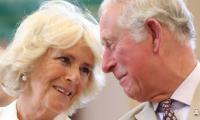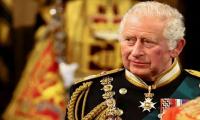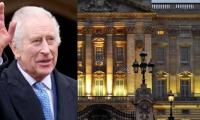Islamabad: A 32-member cultural troupe of Pakistan has gone to China to participate in the Xinjiang Cultural Festival. The troupe is being headed by the Pakistan National of the Arts (PNCA) Director General Syed Jamal Shah.
The delegation comprising folk singers and dancers from all parts of the country as well as traditional music instrumentalists will be performing at four different places in Xinjiang.
Jamal Shah, while talking to this scribe, said all the best talent was selected for the troupe including sitar player, Aamir Hussain, ‘tabla’ player, Muhammad Ajmal, flutist, Salman Adil, ‘rubab’ player, Ghulabkhel, violinist, Ustad Raees Ahmed and Kathak dancer, Adnan Jehangir. He said the selected folk dance performers of the National Performing Arts Group (NPAG) from Islamabad, Lahore and Karachi are the main attraction of the cultural troupe.
The NPAG will be performing various dances including ‘Kalash’ valley dance, ‘leva’, Kashmiri, classical, ‘Kathak’, Sindhi ‘Jhoomar’, ‘Khattak’, ‘bhangra’, ‘dhol’ and 'aaj rang hae' of Ameer Khusro. Every dance is very colourful and reflects the local traditions, customs and the vibrant dresses and jewellery.
The cultural troupe’s performance begins with the ‘Kalash’ dance that is from the extreme north western region of Pakistan where the mountains meet the sky. The valley of the ‘Kalash’ is inhabited by people of an origin which is still a subject of research. These people have been there for more than a millennium. The ‘Kalash’ dance depicts the people’s closeness with nature. The attractive headgear of the girls is decorated with cowry shells.
Another is the traditional ‘Leva’ dance performed by men. This dance is a common feature at weddings and other happy occasions in the tribal society of the Baluchis. This dance has a hypnotic beat and an evocative rhythm.
The classical dance form has always been source of inspiration that takes one to the times of the great Mughals when there was a rich renaissance of arts and culture. Choreographed in ‘Kathak’ style with intricate foot work and changing rhythmic patterns, Adnan Jehangir, the performer brings this exquisite dance form to an exciting climax.
The cultural troupe could not be complete without the ‘Khattak’ dance from the legendary Khyber Pass that is performed by a male group of hardy tribesmen to celebrate the velour of the Pakhtoons who successfully resisted the attempts to subjugate them and tried to colonize their land.
The Kashmiri dance is a vital part of the performances. In the legendry paradise on earth that is the verdant valley of Kashmir surrounded by snow-capped mountains, girls gather for the traditional Kashmiri dance. The symbol of their land is the leaf of the plane tree, which is embroidered in white silk on their green velvet skirts. Kashmiris keep warm in winter by wearing a pot filled with glowing embers encased in mulberry wicker baskets around their necks – the kangri.
The ‘Jhoomar’ is the best of Sindhi dances that is performed by village girls to celebrate a good harvest. The troupe also includes the ‘Balti’ dance from the highest Karakorum Mountains of Gilgit-Baltistan, the extreme Northern region of Pakistan. The music and dance loving people of Baltistan welcome the spring through the popular dance called “MENDOO TANGMO” in which the young boys and girls keeps on exchanging flowers through their bantering dance movements to select their life partners.
This scintillating production takes you back to the times of the great Mughals when there was a rich renaissance of arts and culture. The ‘sufi’ poetry of Ameer Khusro, ghazals of Bahadur Shah Zafar and ‘bhajans’ of Meera Bai are beautifully juxtaposed together. Choreographed in the classical ‘Kathak’ style with intricate footwork and changing rhythmic patterns, the dancers bring this exquisite art form to an exciting climax.
The concluding performances of the cultural troupe are the ‘Bhangra’ dance and ‘dhol’ performance. ‘Banghra’ and ‘dhol’ are symbol of the colours and vigour of the Punjab, the most populous province of Pakistan. ‘Bhangra’ dance is performed by a group of young males and females to welcome the spring and to celebrate the successful harvest. The dance is performed on the scintillating beat of ‘dhol’ the double barrel skinned drum.
Justice Tariq Mehmood Jahangiri took up Sher Afzal bail plea for hearing
CCP’s announcement made, stating that applicants are required to pay money upfront in order to enroll
According to details, the police took a van filled with female students of medical college to a police station on...
In this image, the logo of the Nowshera Press Club can be seen. — Facebook/Nowshera Press Club/FileNOWSHERA: The...
Senator Sherry Rehman said the PPP had previously extended an offer to the PTI to form a government, but the PTI is...
A division bench comprising Justice Shakeel Ahmad and Justice Dr Khurshid Iqbal heard the petition filed by the KP...







